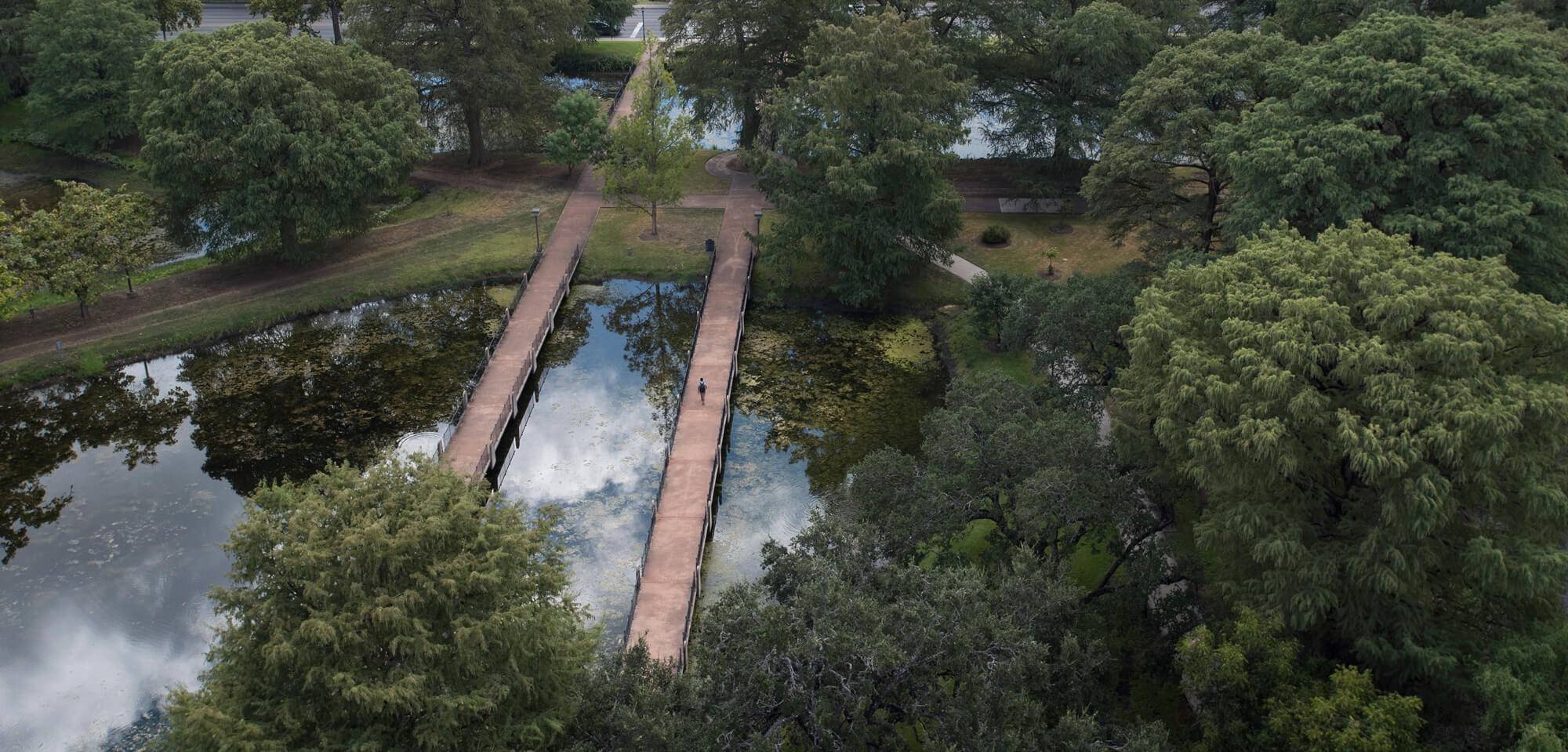Geography Research and Teaching Labs
Our department houses over 100 64-bit Windows workstations in computer teaching and research labs in the building. These systems are used primarily for geography majors and geology minors taking various technological and research courses. Each system is supplied with the latest processing power using Intel I7 processors. These processors can handle tasks as simple as typing a paper to more graphic and computational intensive tasks.
The lab functions are as follows:
Room 120 houses 21 workstations running Windows 11 operating system. The lab is equipped with an HP color enterprise printer. The current courses taught in this room are: Meteorology Lab (GEO 4427), Advanced GIS (GEO 3426), and Advanced Topics in Remote Sensing (GEO 7366).
Room 121 houses 21 workstations running Windows 11 operating system. The lab is equipped with an HP color enterprise printer. The current courses taught in this room are: Maps and Mapmaking (GEO 3411), Water Resources (GEO 3434), and Principles of Remote Sensing (GEO 3416).
Room 122 houses 21 workstations running Windows 11 operating system. The lab is equipped with an HP color enterprise printer. The current courses taught in this room are: Digital Remote Sensing (GEO 4412) and Introduction to GeoProgramming (GEO 4393C).
Room 123 houses 25 workstations running Windows 11 operating system. The lab is equipped with an HP color enterprise printer. The current courses taught in this room are: Maps and Mapmaking (GEO 3411), Fundamentals of Geographic Information Systems (GEO 2426), Geographic Information Systems I (GEO 5418), Geographic Information Systems II (GEO 5419), and Geomorphology (GEO 3425).
Room 327 houses 10 workstations running Windows 11 operating system. The lab is equipped with an HP black and white and color printer. Graduates students use the lab for graduate research and projects.
Room 367 serves as the Biogeomorphology Laboratory for research and teaching purposes. The lab offers equipment for studying tree-ring analysis of trees damaged by geomorphic processes such as landslides, floods, and snow avalanches (i.e. dendrogeomorphology). This equipment is also used by advanced graduate students in research seminars and their own research. The lab provides equipment for grain-size analysis of soils, also available to advanced students for their research. Equipment in the lab also includes a research-grade mirror stereoscope for the analysis of landform and vegetation patterns on aerial photographs, and a vortex simulation device for use by climatology faculty and students. The lab also provides a convenient space for group meetings of faculty with their graduate student research groups.
Room 385 hosts infrastructure for the collection, analysis and storage of data related to the on-going research in cartography and geovisualization that I supervise (including funded research, pilot studies and long-term infrastructure development efforts), and serves the following specific functions:
Host hardware for human subject experiments involving eye tracking data collection (eye tracker device, participant working station, eye tracking server and management station).
Host hardware for human subject experiments involving virtual reality data collection (VR work area, ceiling-mounted infrared beacons, wearable hardware, and VR server and management station).
Provide a low-distraction environment for human subject experiments (no noise, no foot traffic).
Provide a restricted-access environment for safe storage of human subject data, as per IRB requirements (key-based access to physical storage, dedicated password-protected workstation for digital records storage).
Host social media data-collection hardware (part of the server farm infrastructure I have set up).
Host two workstations for eye-tracking, VR and social media Big Data processing, and associated cartographic / visualization work.
